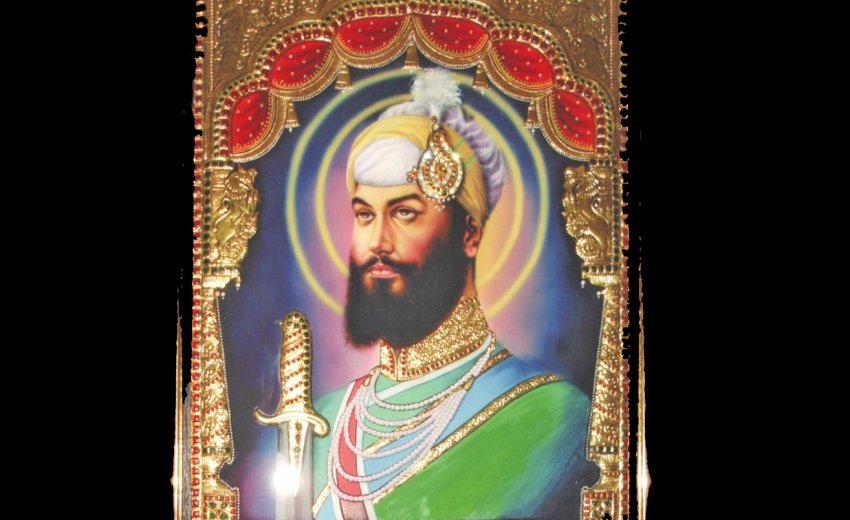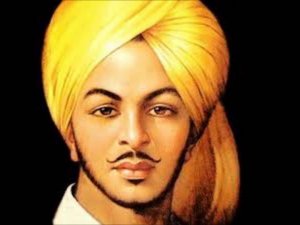CONCEPT
Following the martyrdom of Guru Arjan Dev Ji, the Sikhs were understandably discontent with the political climate of Punjab. The world held its breath as arrangements were made for Guru Hargobind Sahib Ji’s guruship to be officiated by a ceremony headed by Baba Buddha Ji. They wondered, as anyone would, what would follow now? Would the 6th Guru bow to Jahangir’s pressure to change the Sikh scripture, then known as the Adi Granth Sahib? What else were his options anyway? He was a holy man, a saint, and though he wielded respect from all common folk irrespective of their religious association, the physical ruler of the country was still a brutal tyrant who considered it religiously righteous to boil holy men alive.
Beyond my dramatic illustration, the grandeur of Guru Hargobind Sahib on the day of his guruship is better captured by the much-respected Dhadis-style court poets Bhai Nathmal and Abdullah, as follows:
“Do talwara badiyaan, Ik mir di, ik pir di,
Ik azmat di, ik raj di, Ik rakhi kare vazeer di.
Himmat bahaan kot-garh, Darvaza balakh-bakhir di,
Pagg teri ki Jahangir Di!”
Instead of a boy intimidated by the brutal execution of his father, Guru Hargobind Sahib made his first appearance as Guru in a majestic, and somewhat royal, manner. He had adorned two swords representing the concepts of Miri and Piri, emphasizing that they must go hand in hand. Miri is the political aspect of society. The word ‘Miri’ is a contraction of the Persian word ‘Amir’ (lit., commander, governor, lord, prince) which basically refers to governorship and material power. It’s not limited to any particular form of government and hence applicable to the then monarchy as well as today’s democracy. Piri (Persian “Pir” (lit. wise man, saint, spiritual guide, head of a religious order) stands for spiritual authority. Guru Hargobind established from the outset that temporal and spiritual authority must go hand in hand. There is no way to separate religion and politics. Just as chaos would ensue in human society if political organization ceased to exist it would be equally disastrous if there were to be no spiritual growth and development.
Guru Hargobind Sahib sought to physically display the symbols, Miri and Piri, at all times by carrying two swords crossed across his person. In this way, the Sikhs would be reminded daily, when they saw their Guru, of the importance of striving to achieve a balance in both the material and spiritual parts of their lives. In terms of Miri, Sikhs had to be able to defend themselves as well as be self-dependent so that they owed no favors to anyone. Piri had to with the mental and spiritual growth of the Sikhs. The sixth Nanak filled his Sikhs with a zealous spirit which allowed them to evolve into alert and self-assured warriors. By further implementing the concept of Miri Piri, not only did Guru Sahib create an army that had the Moghuls running for home, but he also cemented the foundations of what would later be introduced as Khalsa by Guru Gobind Singh Ji.
RELEVANCE
Comprehensive understanding of the Miri Piri concept can play an integral part in one’s development as a Sikh today as well as in the progression of the Sikh Panth. Rather than going astray fighting amongst ourselves and acting in humiliating ways, that will only be looked upon in dismay by the future Sikh generations, it is necessary that the Sikhs as a unit form some sort of understanding and common ground. What better way to do this than through the Guru’s unquestionable orders and teachings?
Guru Hargobind Sahib clearly sought to strengthen his Sikhs to be sound politicians so that they would be more aware of what is going on in society and especially the in their own country. Rather than relying on other “wise” or “expert” people’s interpretations, Guru Sahib trained his Sikhs so that they would be able to think on their own. In this way, not only could one avoid being biased and brainwashed without realizing it, but one would also be able to formulate their own views and hence fight to have them realized.
That’s exactly what Sikhs need to do collectively today. The community must engineer a comfortable environment where Sikh values and principles are established in children from a young age while they are also encouraged to excel academically. In this way, rather than feeling alienated from adult society, Sikh youth will be able to have a strong sense of belonging to the community. Individuals with strong sense of identity, caliber and character, make great leaders. The flourishing of such leadership would gain the Sikhs solid recognition in the world. This is a much better alternative to the current counter-productive practice of ingraining one’s own political frustrations into one’s child, which only makes children grow up confused and detached.
Politically and spiritually balanced leadership was Guru Hargobind Sahib Ji’s goal. He encouraged the nurturing of leaders who are empathetic to the common man’s dilemma and highly-capable of bringing about betterment. The scope of leadership is limited to not only a political party, a profitable or non-profit organization, or a religious or educational institution, but is also applicable to one’s family and oneself as an individual.
Perhaps while celebrating “Miri Piri Diwas” or the guruship of Guru Hargobind Sahib Ji, we should critically examine ourselves against the Miri Piri concept to be able to identify and improve our shortcomings, while also nourishing our strengths.






